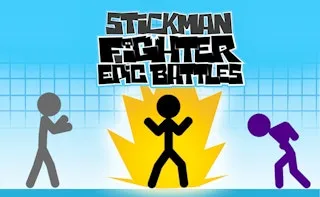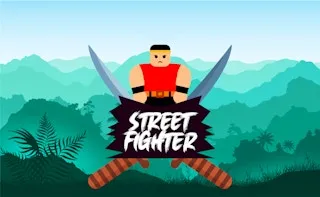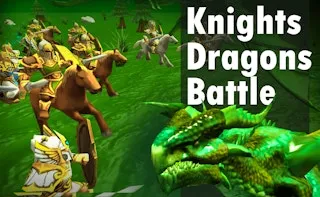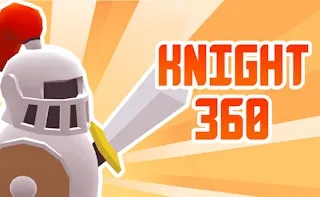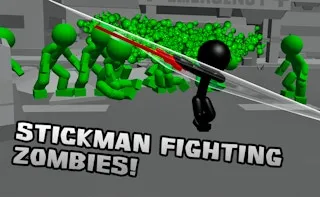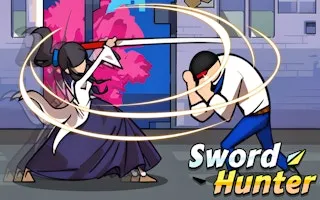Fighting Games
26 games in total. Page 1 of 1
Fighting Games: Master the Art of Combat
Fighting games bring the thrill of tactical combat, pitting players against each other in fast-paced duels. Explore the intricacies of the fighting game genre, from its evolution to advanced techniques, and join the competitive scene.The Allure of Fighting Games
Fighting games are one of the most popular and enduring genres in gaming, captivating audiences with their intense one-on-one battles, intricate mechanics, and deep strategic layers. What sets fighting games apart is their ability to blend fast reflexes with a chess-like mind game, where anticipating your opponent’s moves can mean the difference between victory and defeat. The genre includes some of the most iconic titles in gaming history, such as Street Fighter, Mortal Kombat, Tekken, and Super Smash Bros., which have remained cultural cornerstones for decades.The Complexity Behind the Combat
At the heart of every fighting game lies a complex set of mechanics that require players to learn combinations, execute precise movements, and develop strategies based on the character they choose. Players must not only master the physical execution of moves but also the mental game. This dual challenge makes fighting games unique in the gaming landscape. For example, games like BlazBlue and Tekken emphasize technical proficiency, with players learning frame data, hitboxes, and advanced mechanics like juggling and combo strings. The ability to read an opponent’s actions and predict their next move is crucial in games like Street Fighter or Mortal Kombat. Whether it's executing a perfectly timed uppercut or avoiding a deadly combo, fighting games demand split-second decisions that separate novice players from seasoned veterans.Evolution of Fighting Games
From their early arcade days to the current eSports scene, fighting games have evolved significantly. The genre began with simple controls and pixelated graphics in the 1980s, with titles like Street Fighter II revolutionizing the competitive landscape. As technology advanced, so did the games. Modern titles like Dragon Ball FighterZ and Mortal Kombat 11 boast cinematic graphics and intricate storytelling, but they remain true to the genre’s roots—fast, tactical combat that requires both skill and strategy. Over the years, the community surrounding fighting games has grown into a dedicated and passionate group of players who compete at both casual and professional levels. Fighting game tournaments such as EVO have become massive events, drawing thousands of players from around the world to showcase their skills and claim titles.How to Master Fighting Games?
Becoming proficient in fighting games takes time and dedication. Whether you are a beginner or an experienced player, improving your skills often involves practicing fundamentals such as blocking, learning frame data, and executing combos consistently. Each fighting game presents its own set of challenges. For example, Mortal Kombat focuses on brutal, cinematic moves and fatalities, while Super Smash Bros. introduces a platforming element that changes the pacing of combat. If you're looking to improve, starting with games like Skullgirls, which offer extensive tutorials, can help teach the basics before diving into more complex titles like Tekken or BlazBlue. The learning curve is steep, but the payoff is worth it. The thrill of outsmarting your opponent and executing a hard-earned combo leads to unparalleled satisfaction.The Competitive Fighting Game Scene
Fighting games are not just casual experiences—they have become a mainstay in eSports. Titles like Street Fighter and Tekken dominate global tournaments, with high-stakes competitions such as the Evolution Championship Series (EVO) attracting the best players from around the world. Competing in these tournaments requires mastery of a game’s mechanics and an understanding of the mind games involved in high-level play. Players like Daigo Umehara and Justin Wong have become legends in the scene, known for their ability to turn matches around in the most unlikely situations. For example, Daigo’s “Evo Moment #37” in Street Fighter III: 3rd Strike remains one of the most iconic moments in competitive gaming history, demonstrating the genre's high skill ceiling and the intensity of professional play.The Future of Fighting Games
Looking forward, the future of fighting games seems bright, with new titles on the horizon and growing interest in the genre's eSports potential. Games like Riot Games' Project L aim to bring fresh mechanics to the competitive fighting scene, while established franchises continue to innovate with each new release. As technology evolves, so too does the potential for more immersive and innovative fighting games. Virtual reality and augmented reality are already starting to make their mark on the industry, and it’s only a matter of time before these technologies find their way into mainstream fighting games. Fighting games offer an unparalleled combination of technical mastery and mental strategy, appealing to both casual gamers and dedicated competitors. Whether you're smashing buttons in Super Smash Bros. or learning complex combos in Tekken, the thrill of battle and the satisfaction of outsmarting an opponent make this genre one of the most rewarding in gaming. Join the community, master the mechanics, and experience the timeless appeal of fighting games.PunyGame © 2022. All rights reserved.
